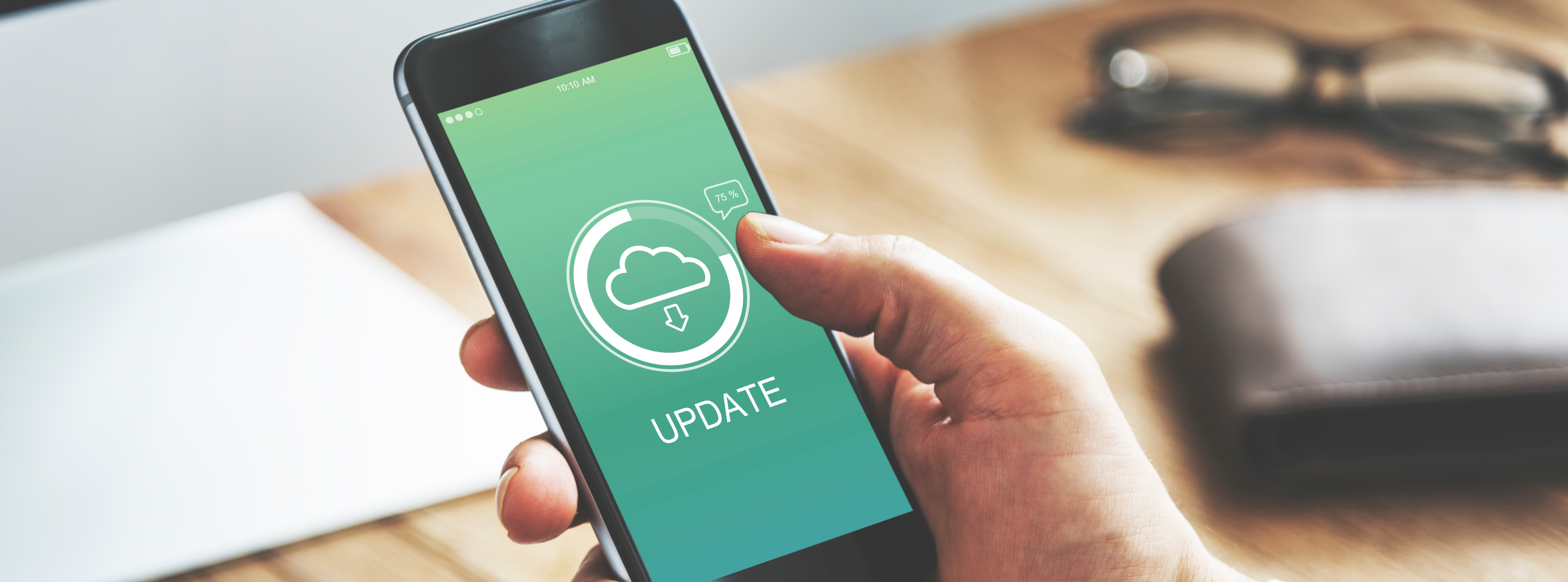Why are mobile phone updates important?
Mobile phone security updates contain important patches to address flaws or gaps in the operating system or in other software that the device uses. These updates differ from other regular software updates, which enhance the software experience by adding new features.
If a hacker finds a way to gain access to someone’s phone or to even take control of a device then this points to a flaw or bug in the phone’s software. Hackers are constantly looking for ways to gain unauthorised access to phones and other devices for a range of malicious and illegal purposes. Additionally, cybercriminals share all vulnerabilities that they come across in the software, which makes things worse.
The security updates fix these flaws and bugs to make it harder for hackers to access your device. It is, therefore, very important to make sure that your phone and its data is protected by updating your phone whenever an update is available.
As new phone models are produced, older models are no longer supported by the manufacturer. This mean that vital security updates are not made available to users of the older models of phone. For Android phones, support usually ends after a few years; for iPhones it tends be longer at around four to five years, yet some devices reach their end-of-life much sooner than expected. Since outdated phones cannot be patched, they are often an easy target for criminals and the risks increase the longer a phone has stopped receiving security updates. As such it's important to not only find out if your current phone is still supported, but know how long you can expect a phone you're looking to buy to receive updates.
To check whether your phone has the latest updates you will need to access the Settings:
- On Android, you can check this by going to Settings > System > System Update. (The specific steps may vary a little depending on the phone)
- On iPhone, open Settings > General > Software Update. You should check out a guide on how to update your iPhone or iPad.

Should I use my device if it is no longer supported?
You can continue to use your phone if it is no longer supported, however, it will no longer be considered safe to use. The best advice with safety in mind is to stop using the old phone. However, if you need to use an old phone temporarily or can’t afford to upgrade, there are some steps that can be taken to reduce the risks of hacking.
You should make sure the phone has the latest software installed. Although you may not be able to benefit from the latest protection available to newer phones it is a good idea to download what you can.
Mobile phone applications can be a serious security risk, especially if the apps are downloaded from third-party sources. Android phones are more of a concern in this as applications can be downloaded from various places including unofficial app stores. For unverified apps, it is very difficult to tell whether an app is legitimate and safe. For Android phones, ensure that you only download apps from the Google Play Store and certainly avoid installing apps by downloading the APK file from a website. The security problems of unverified apps is much less of a concern for iPhones need to be ‘jailbroken’ to allow third-party source apps. It is not recommend to ‘jailbreak’ your iPhone, as this allows you to use unverified apps that could contain malware. If you bought the phone second-hand, make sure to fully factory-reset the phone first to make sure that the phone has not been jailbroken or rooted. And if you do not use an app it is safer to delete it than keeping it on your phone.
You can help protect your personal information by simply not giving too much away in the first place. Don't do any online banking on the phone, don't use your phone for business that includes dealing with company email accounts.
If you have any concerns, or have been affected by a cyber-related issue, report it to us by submitting a Cyber Concerns Online Reporting Form.
This page was last reviewed 23/04/2024.

